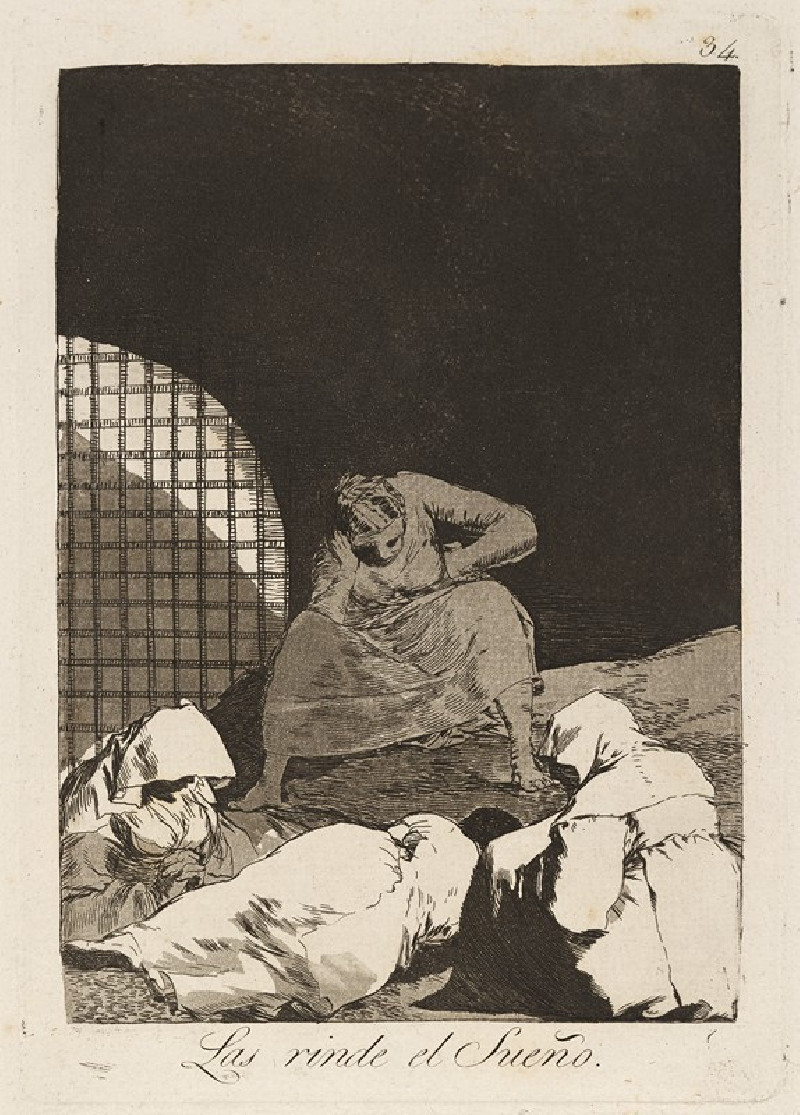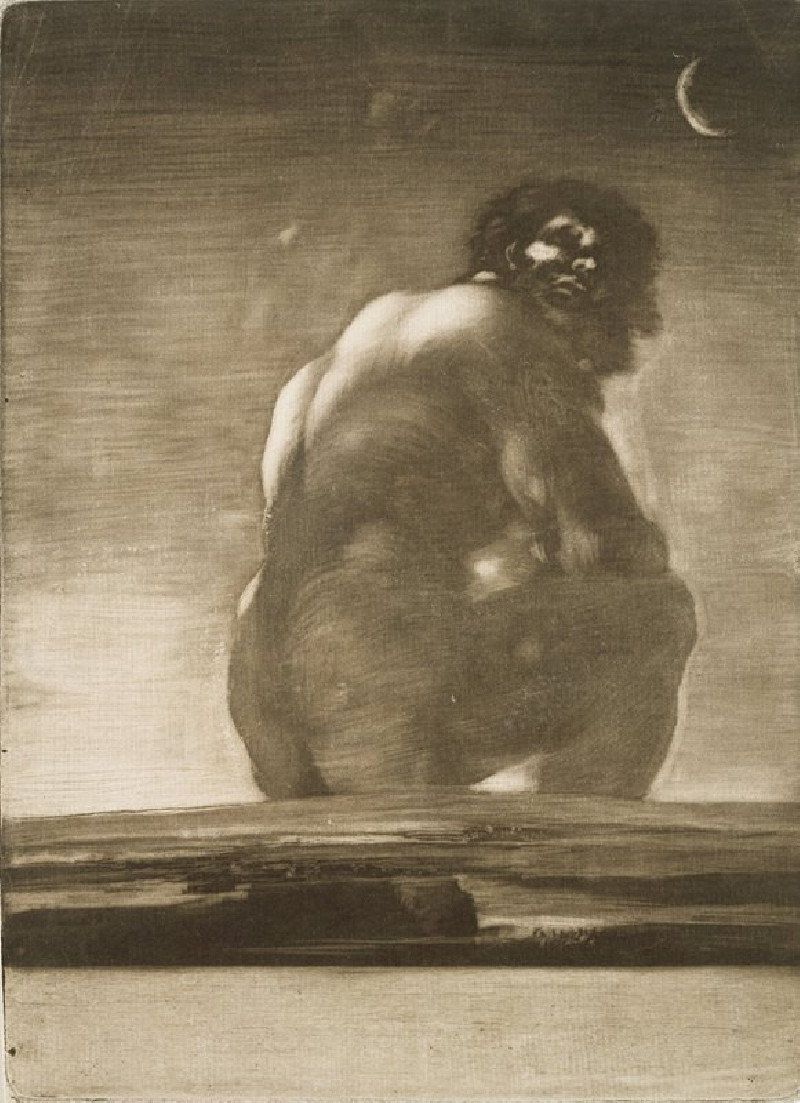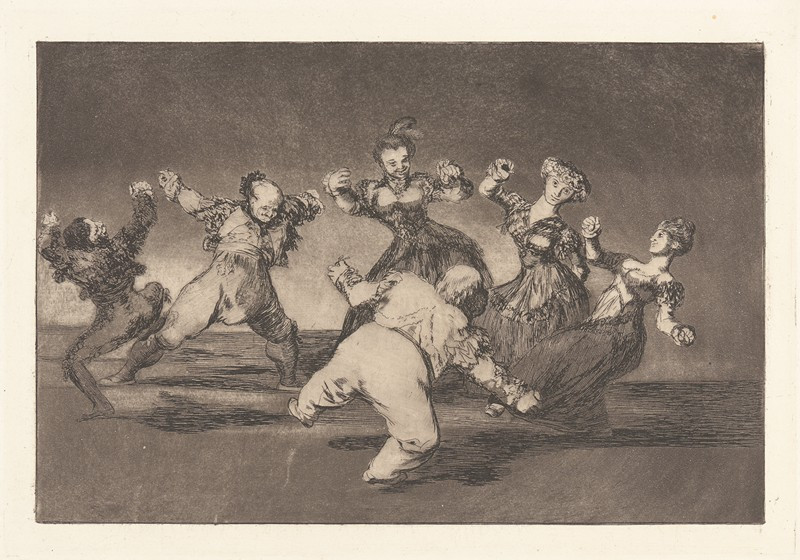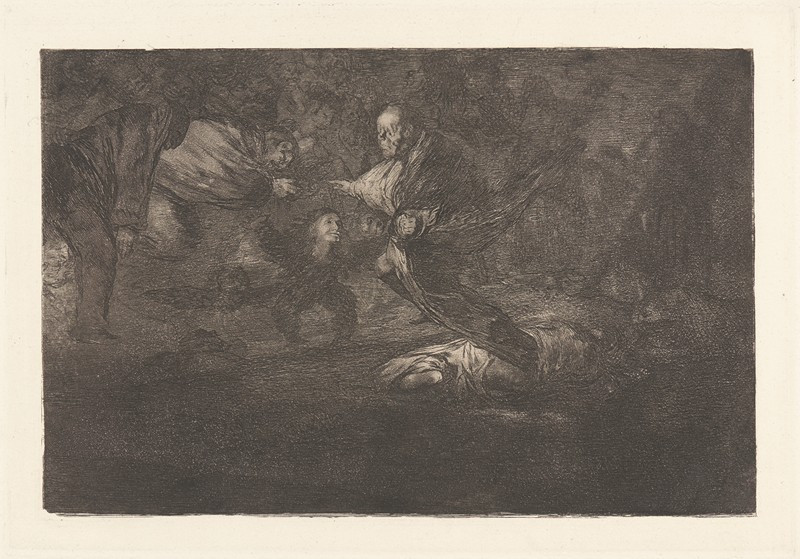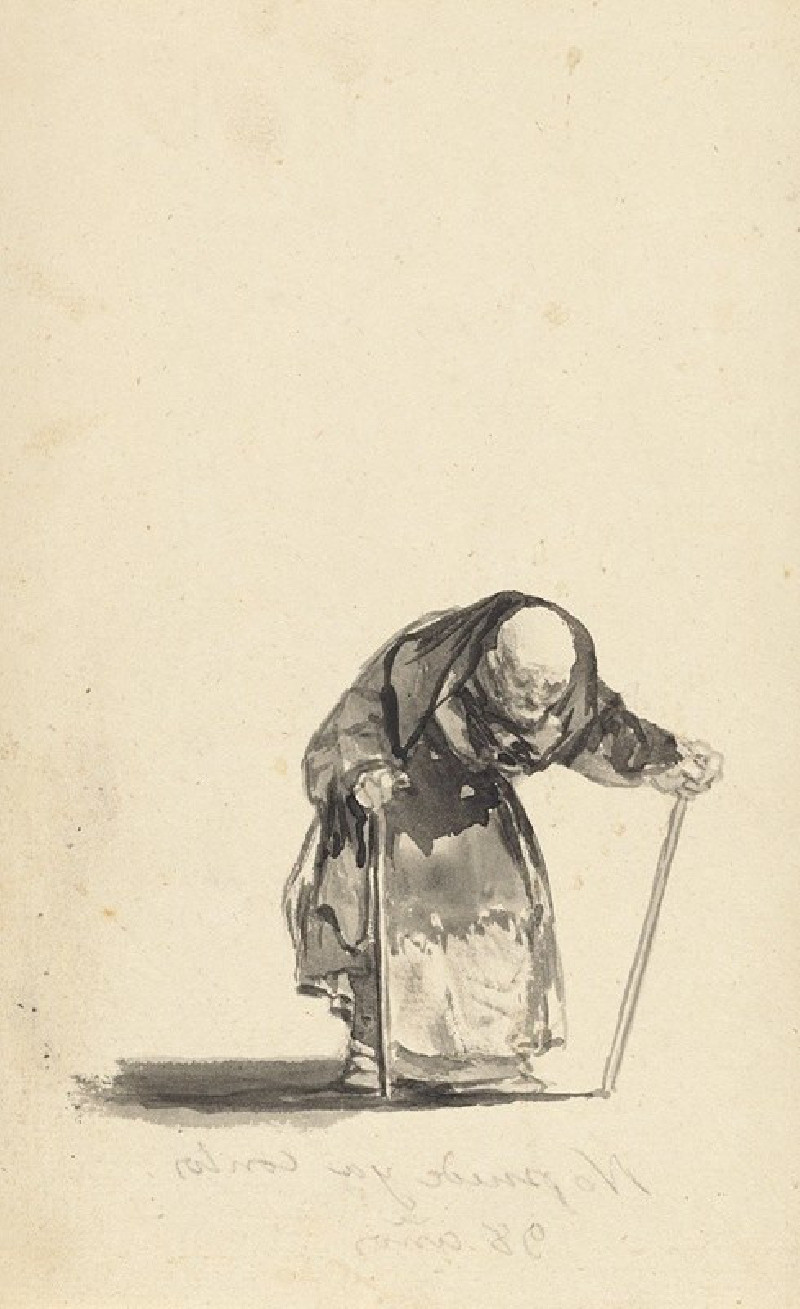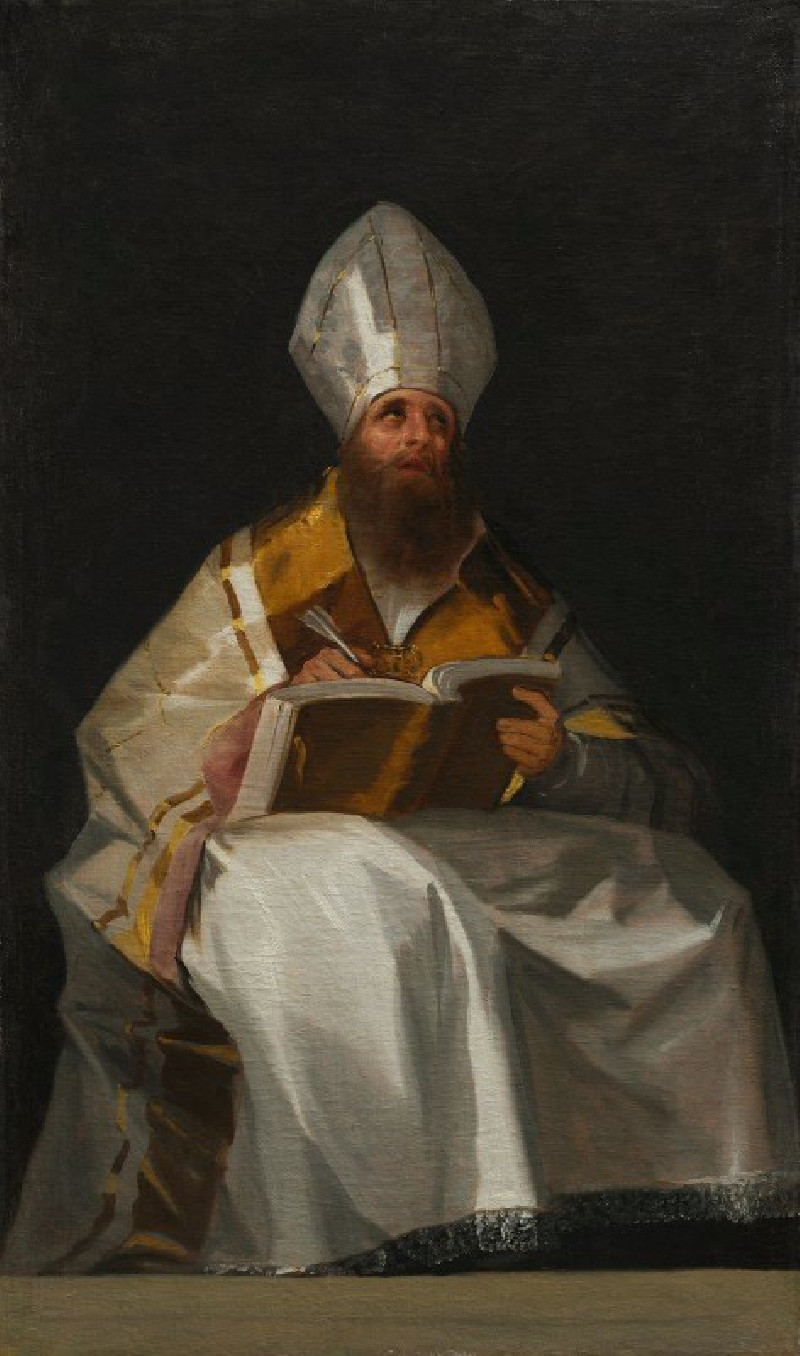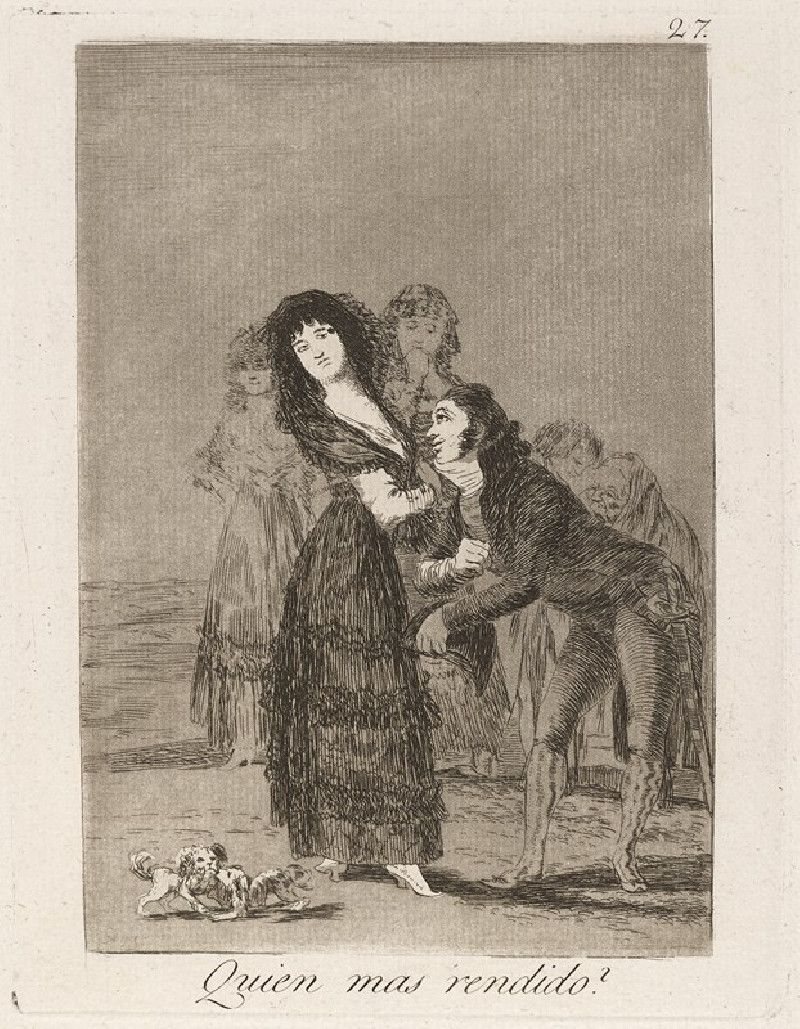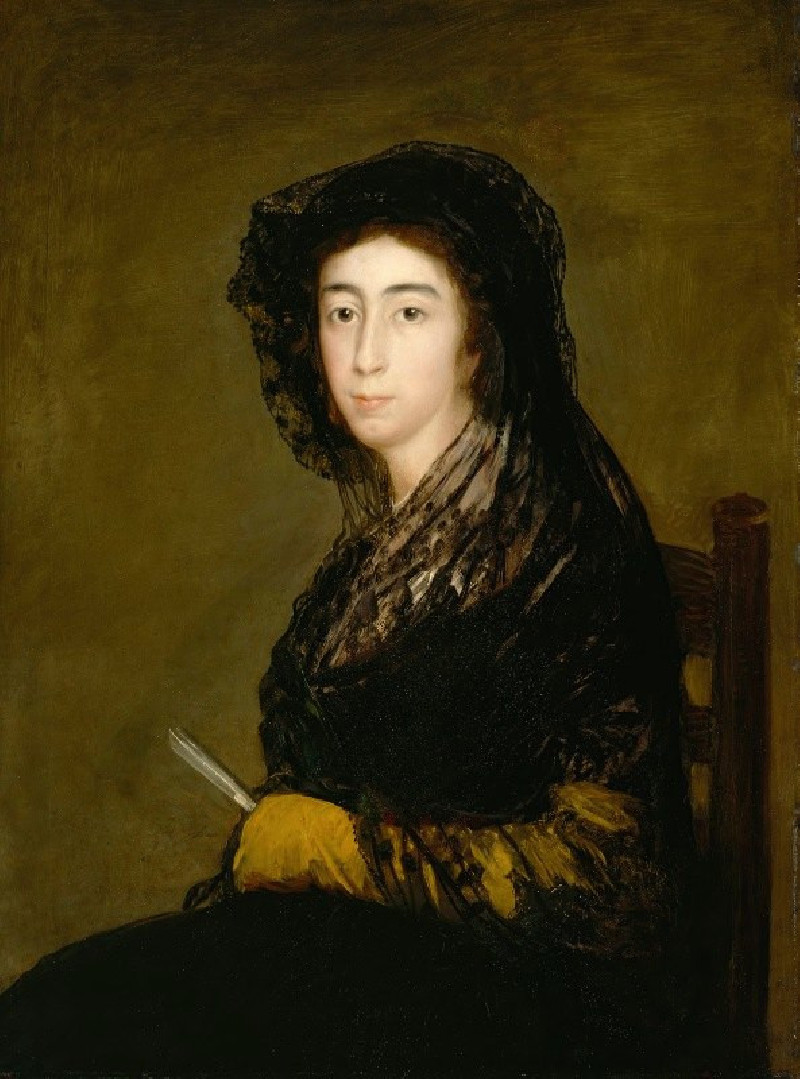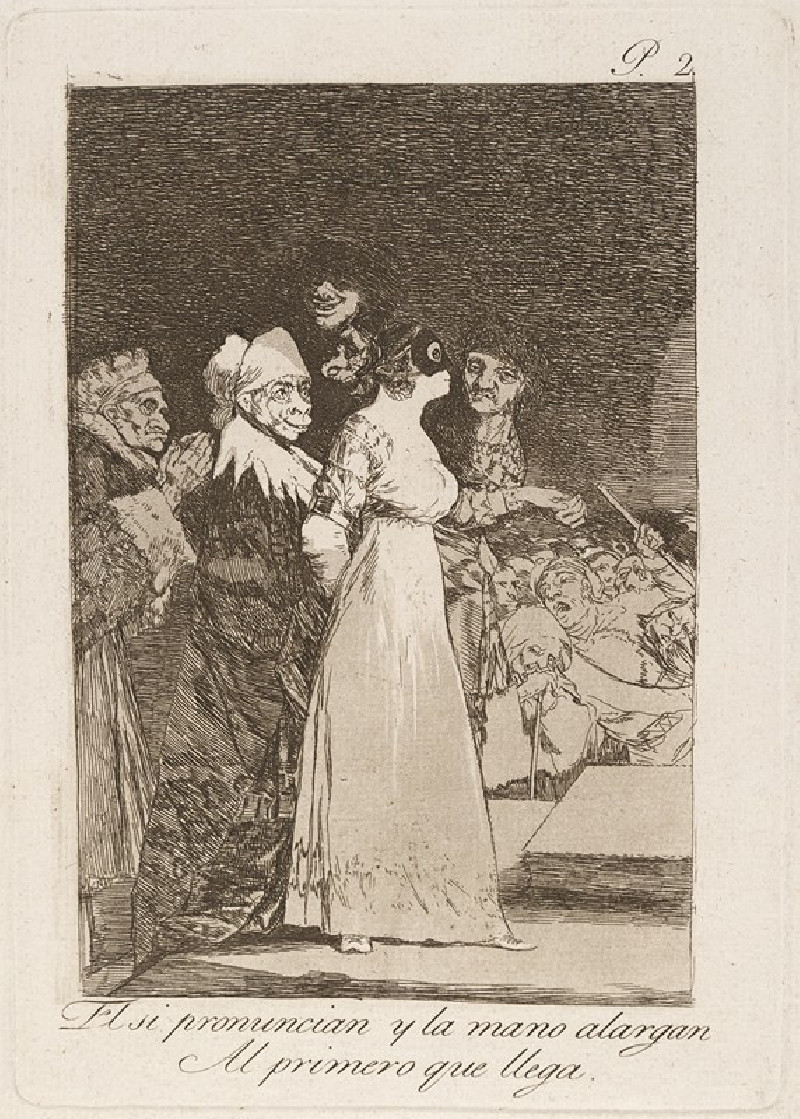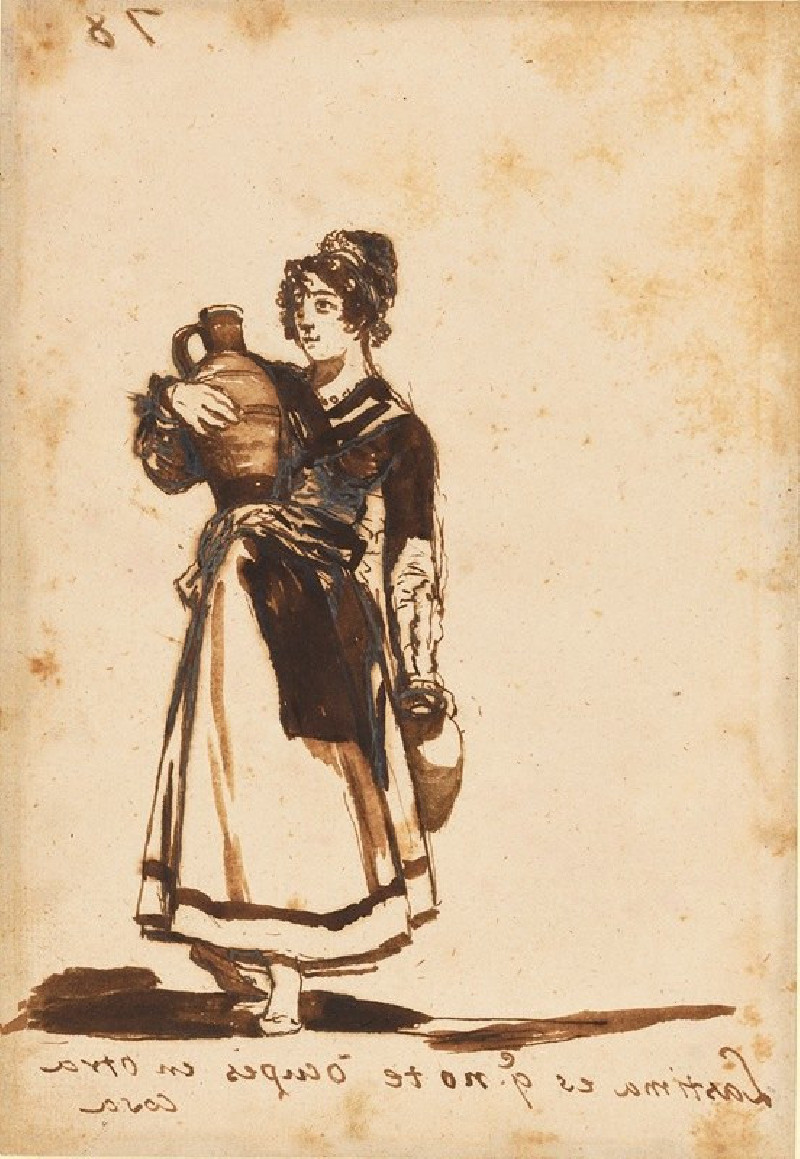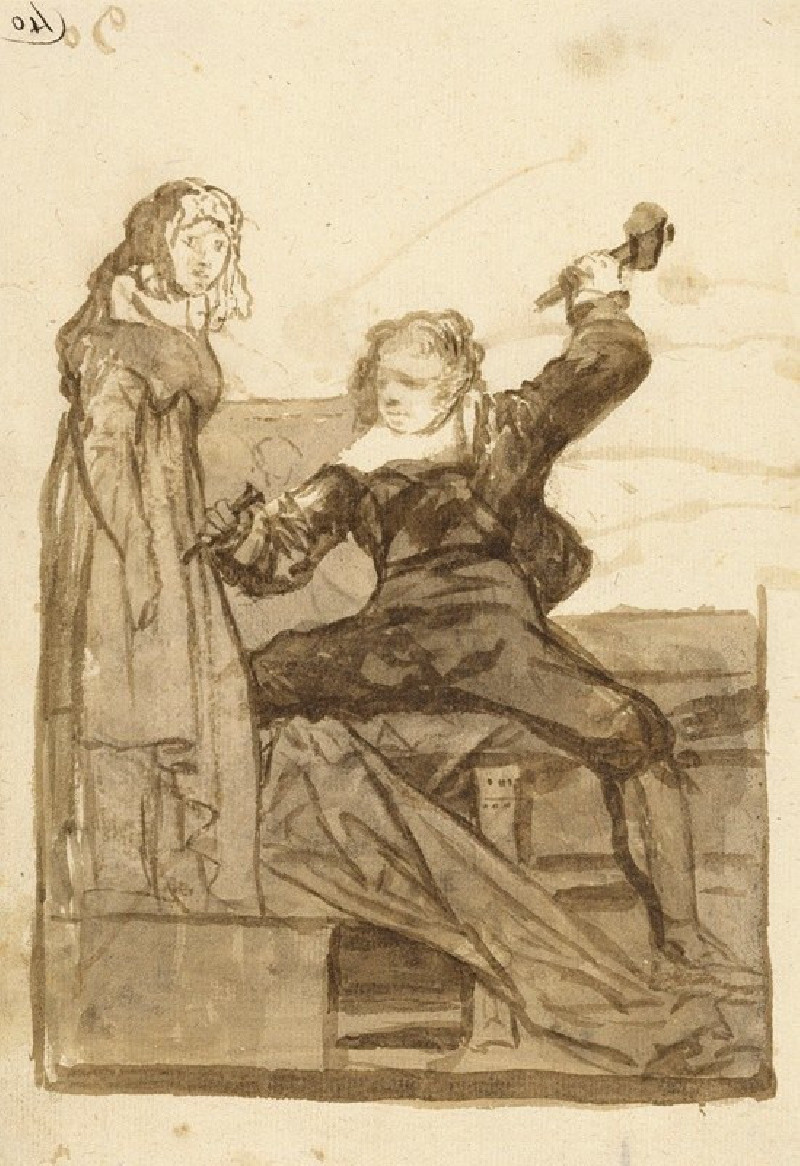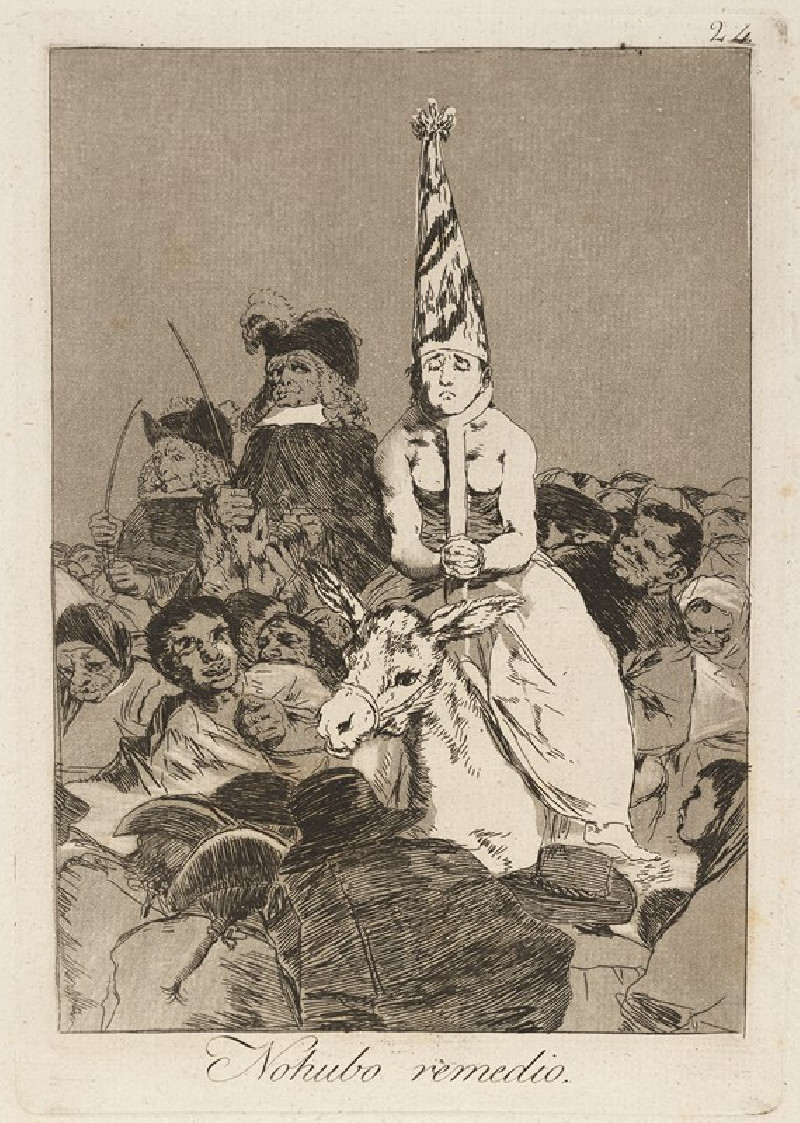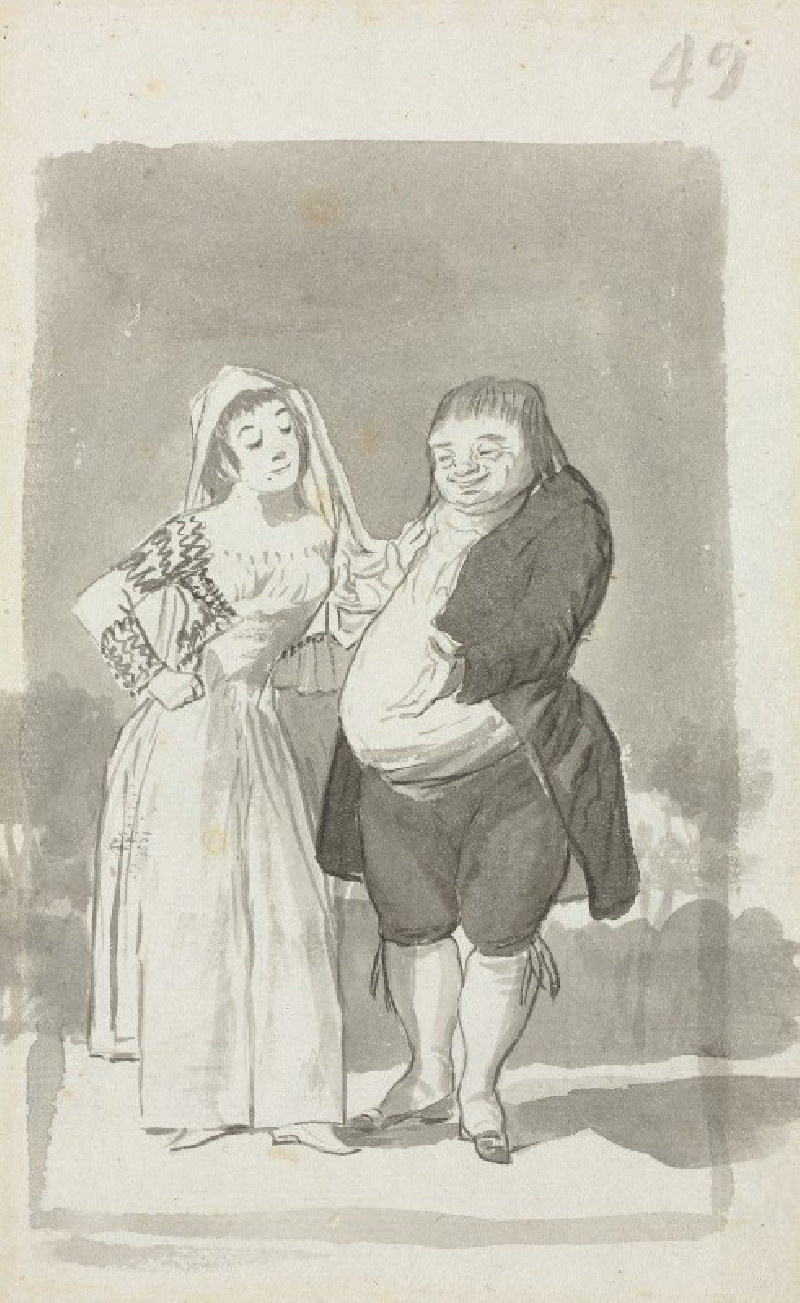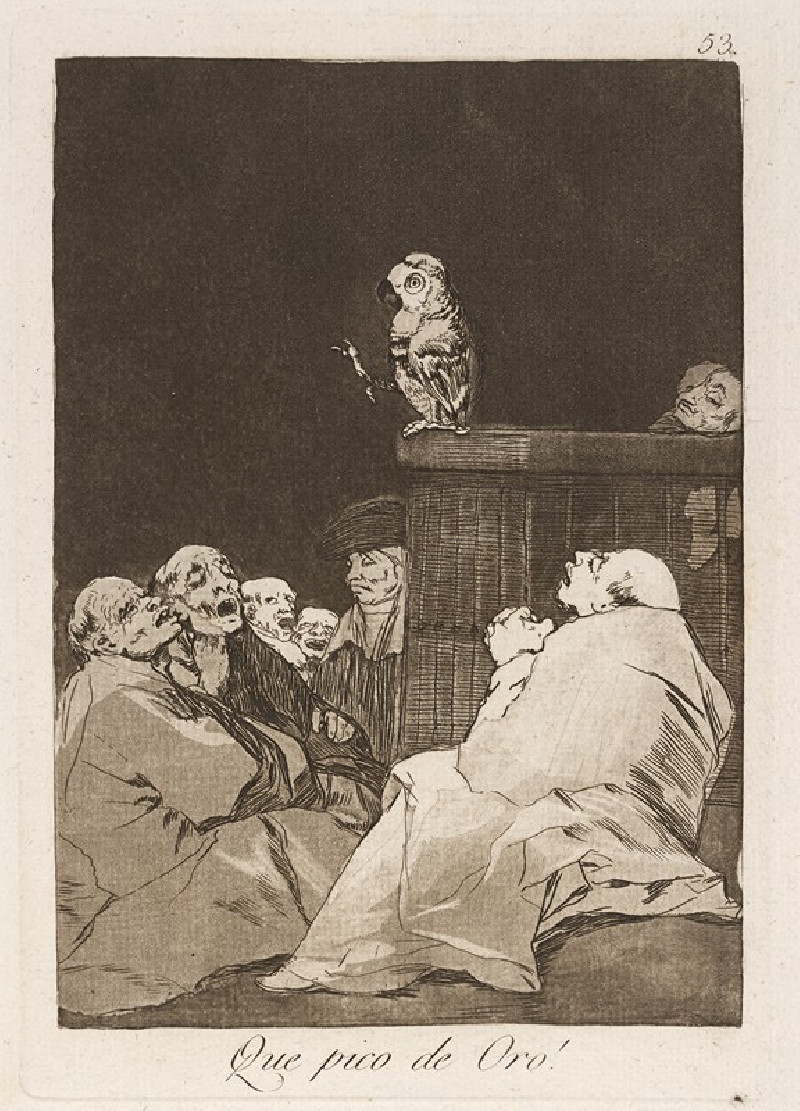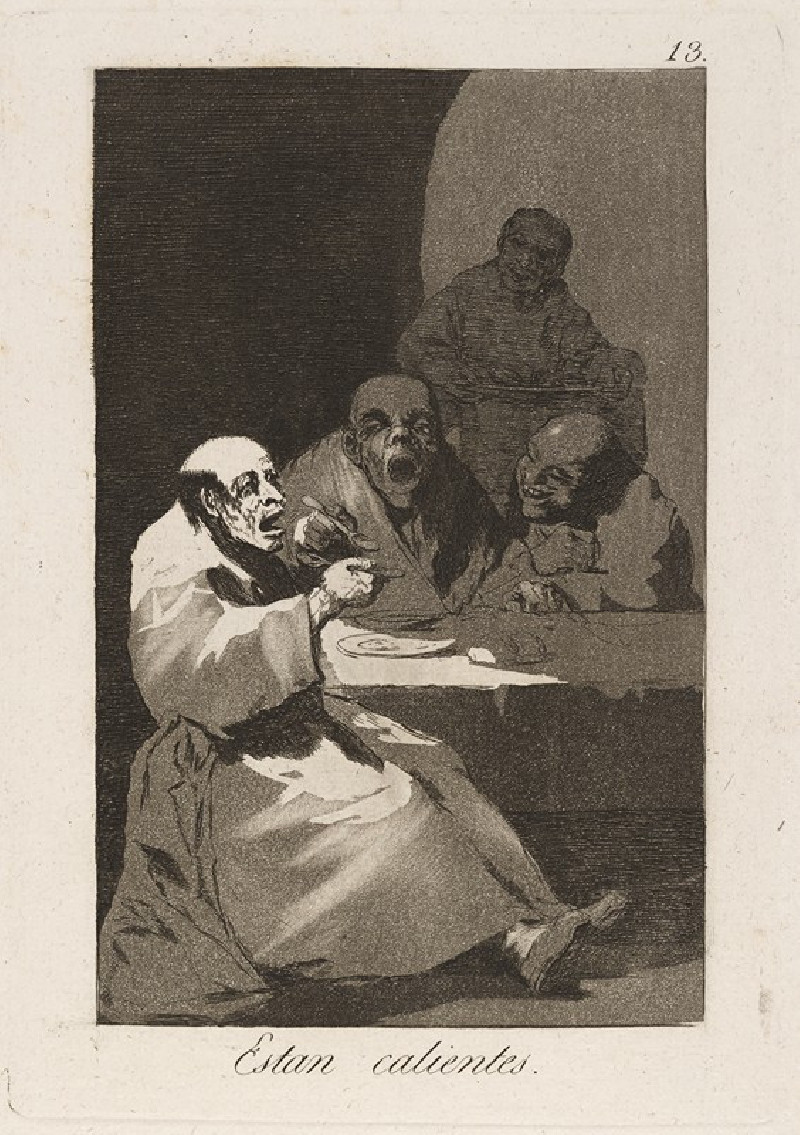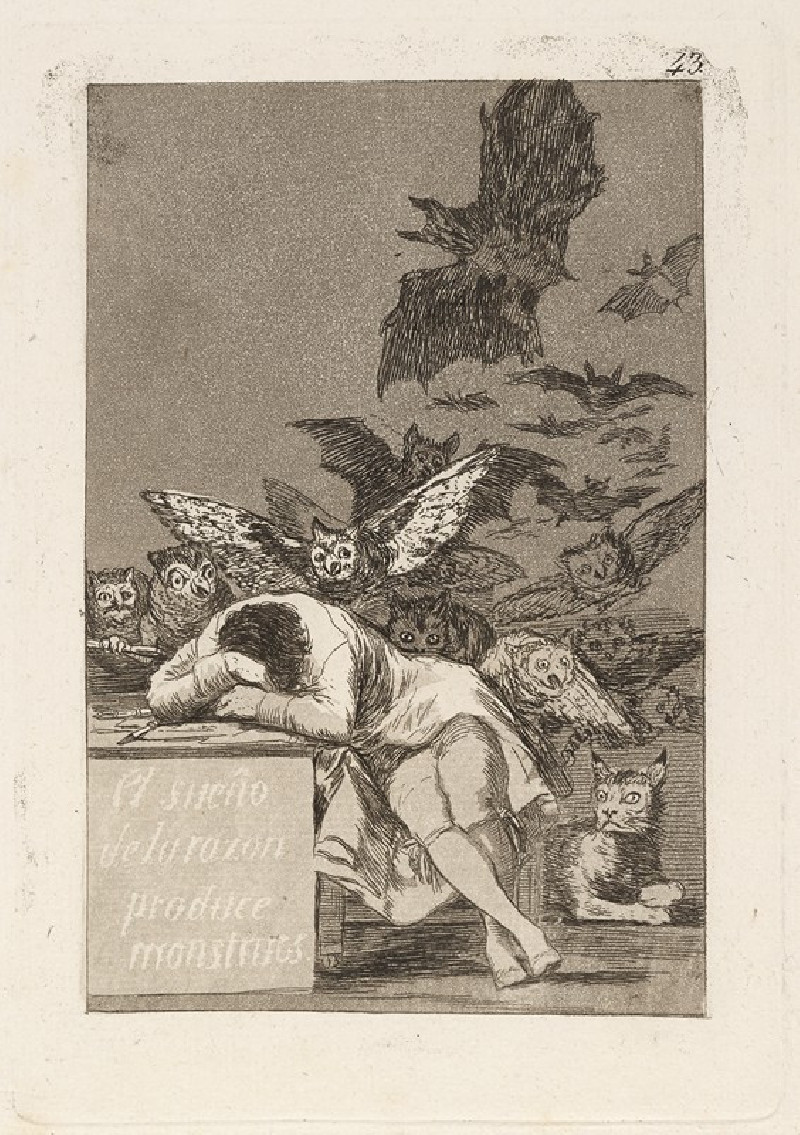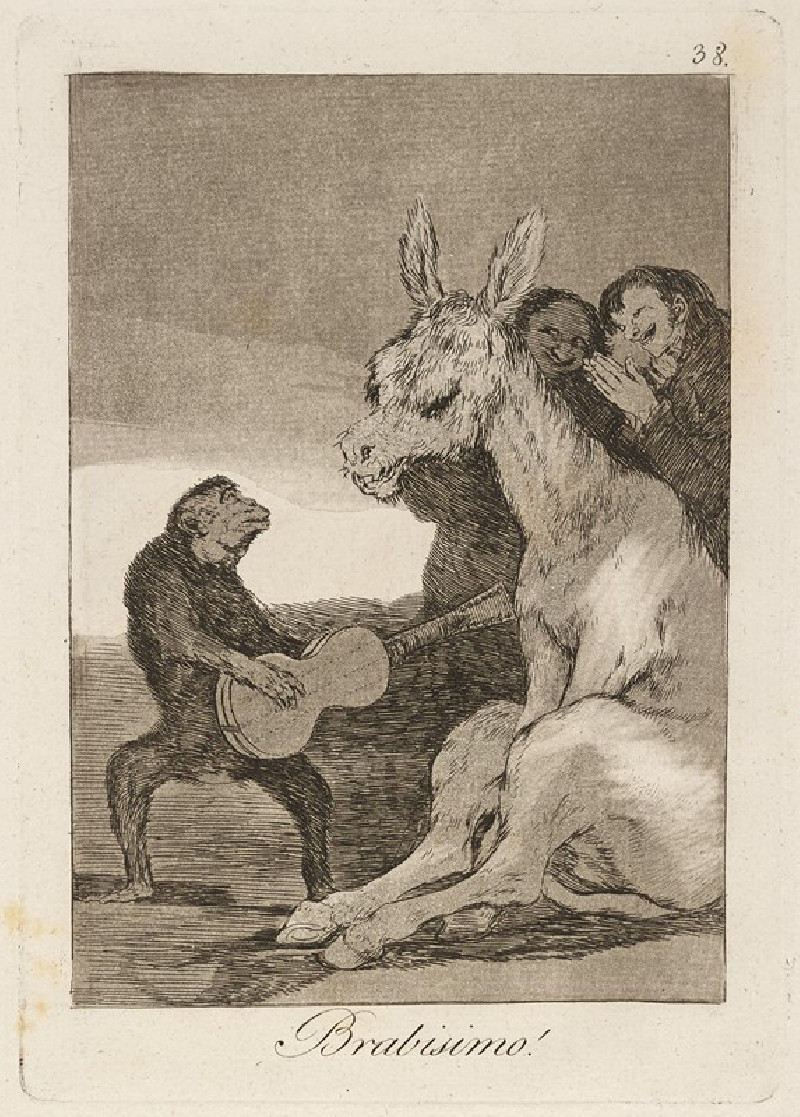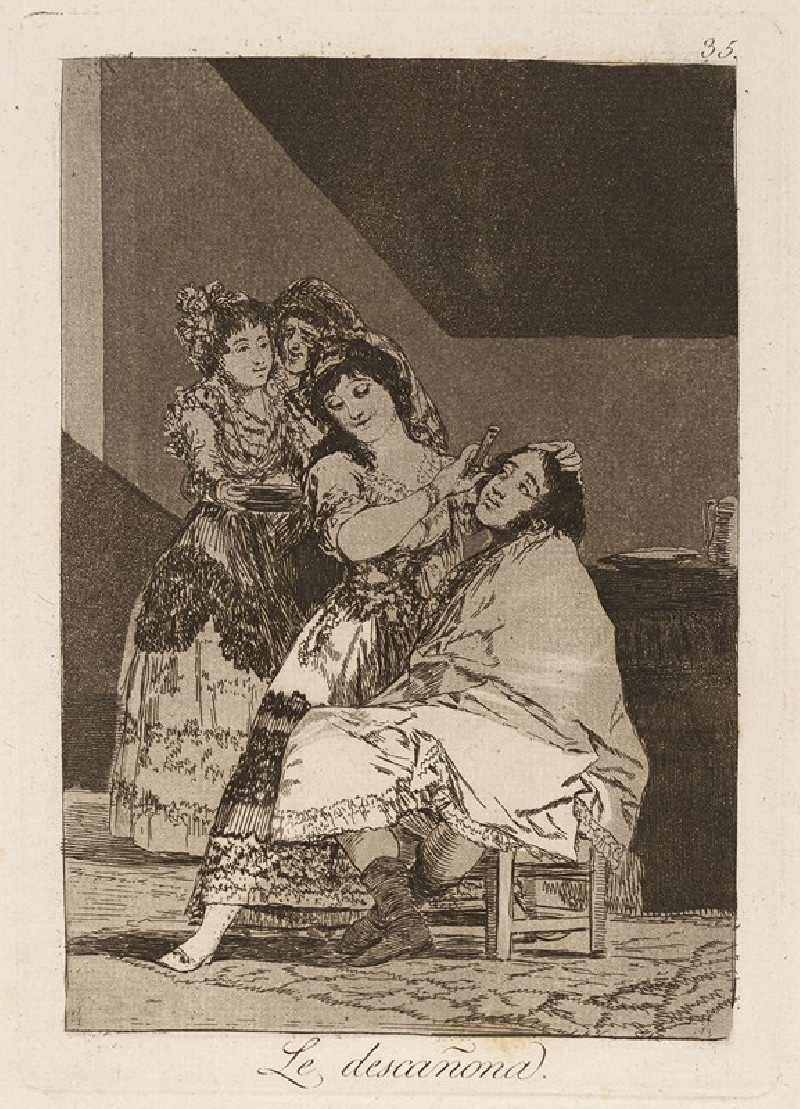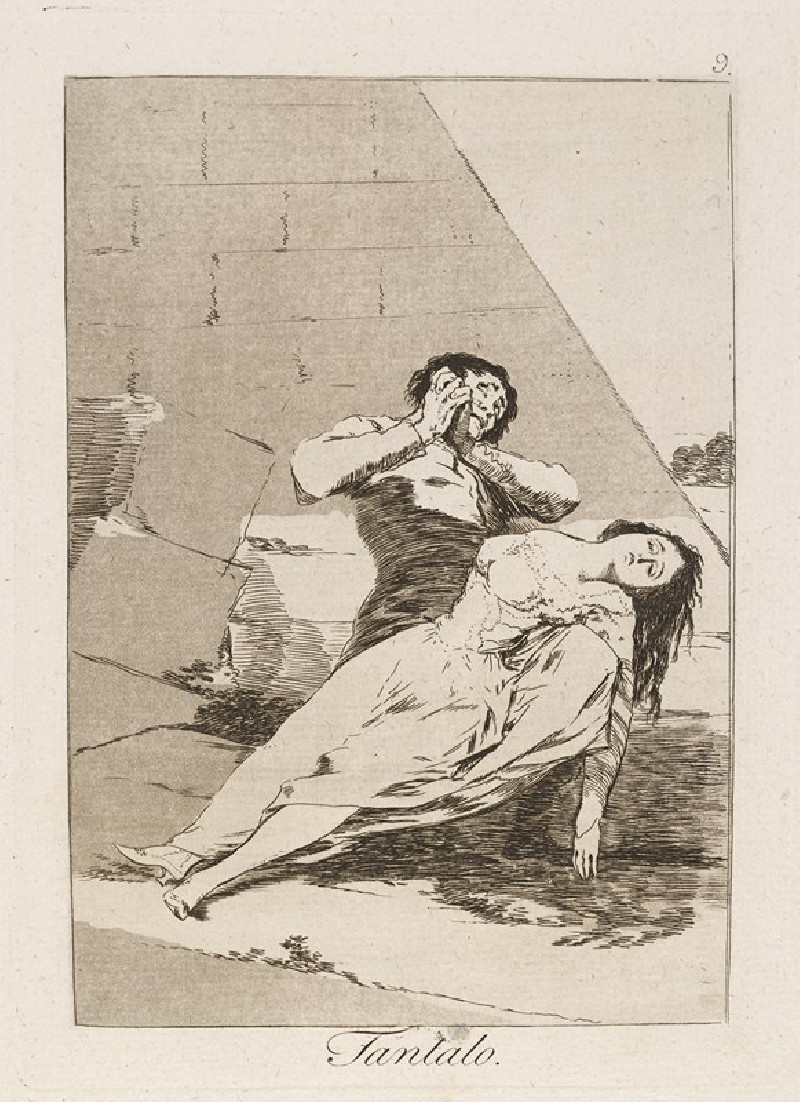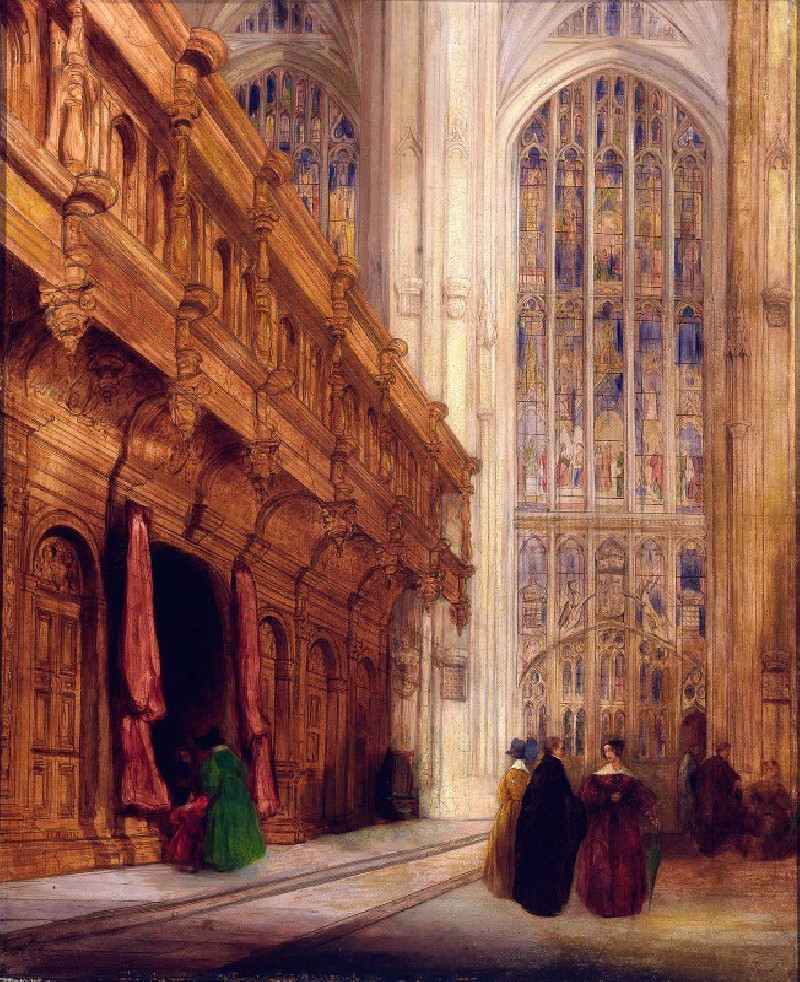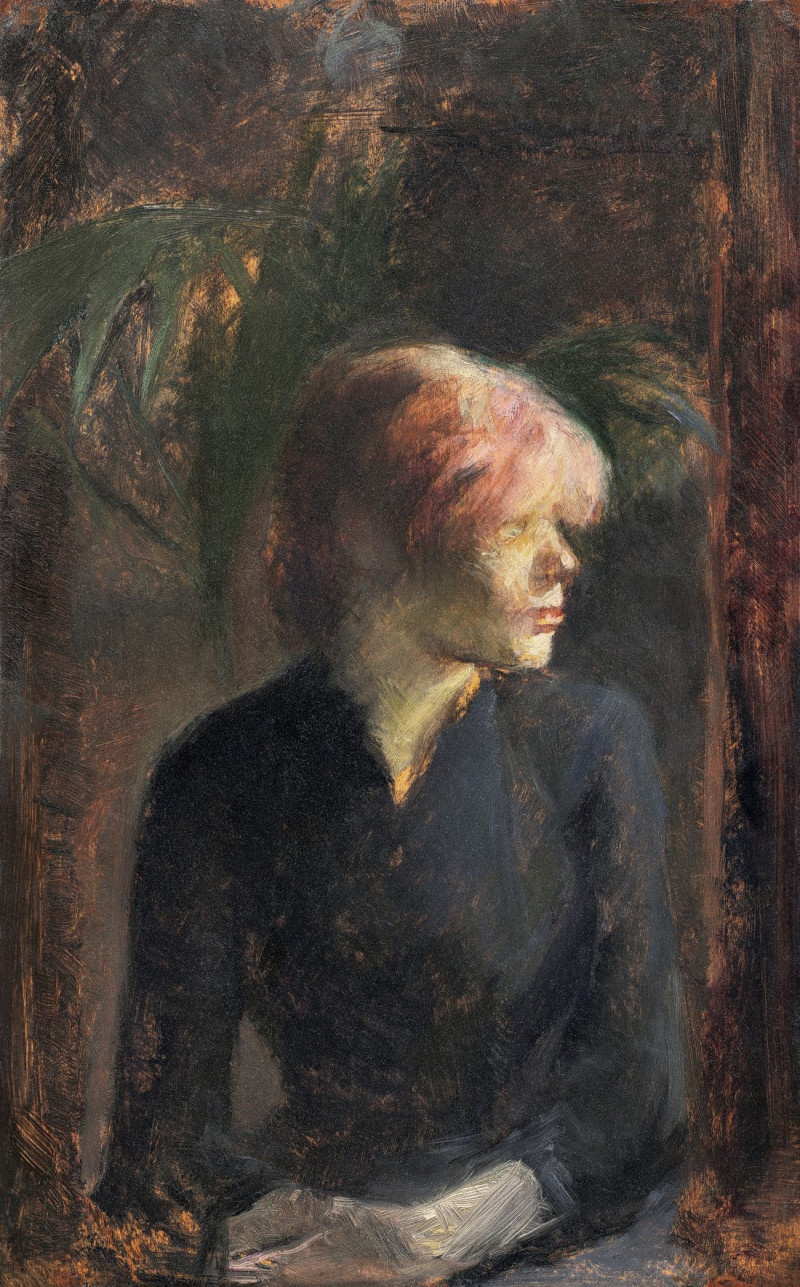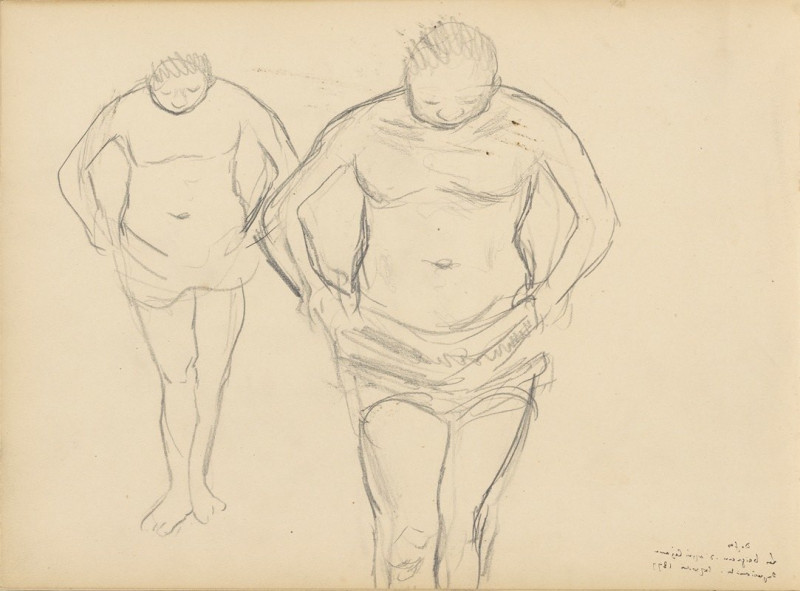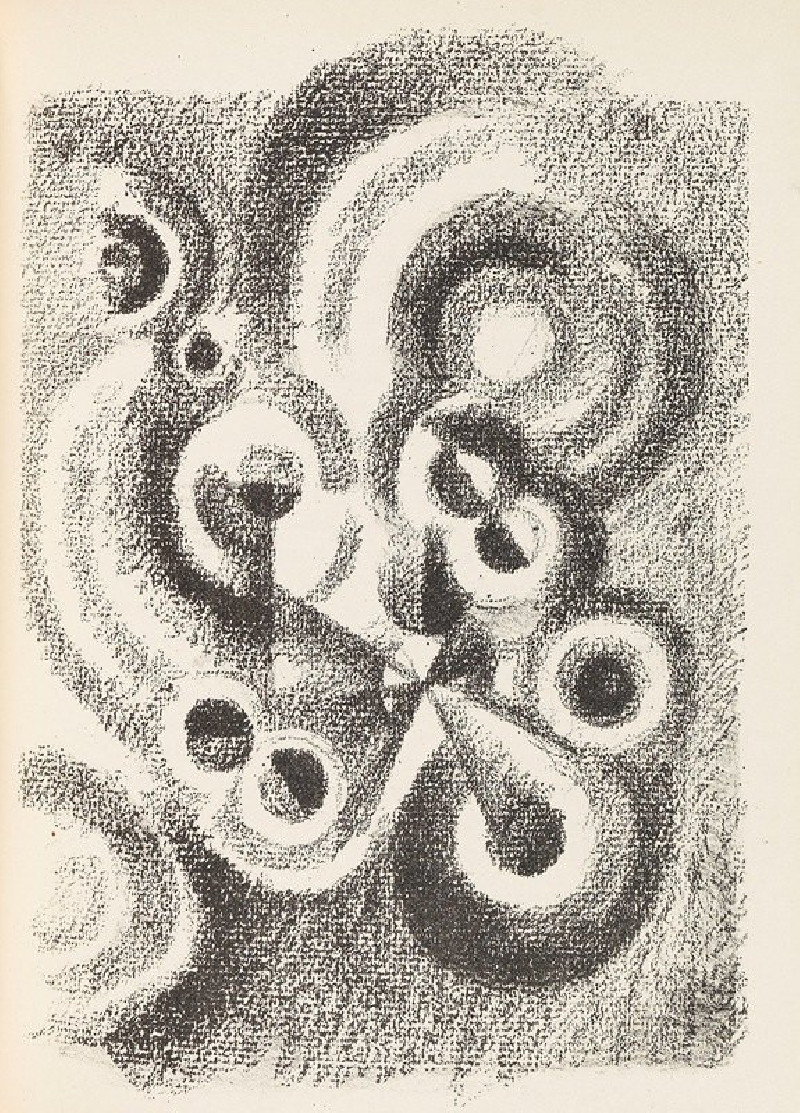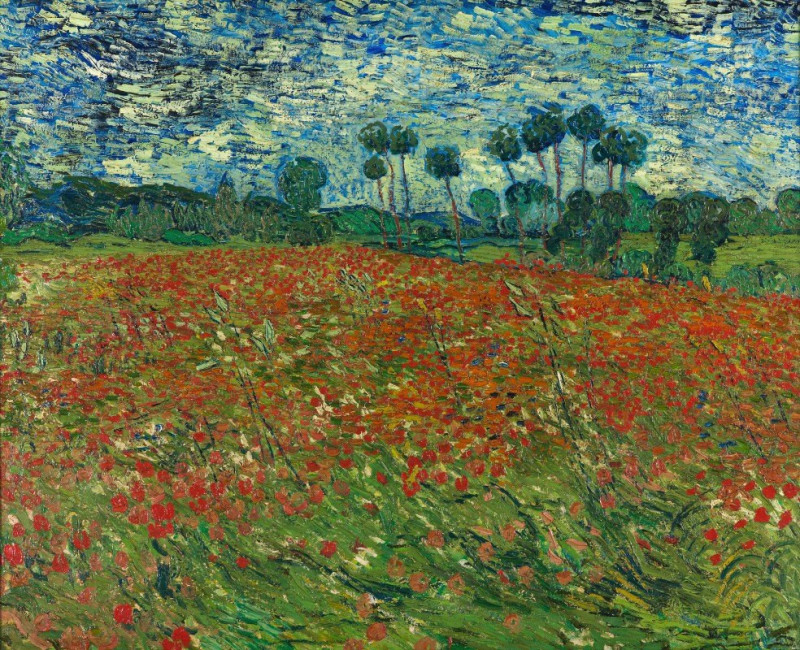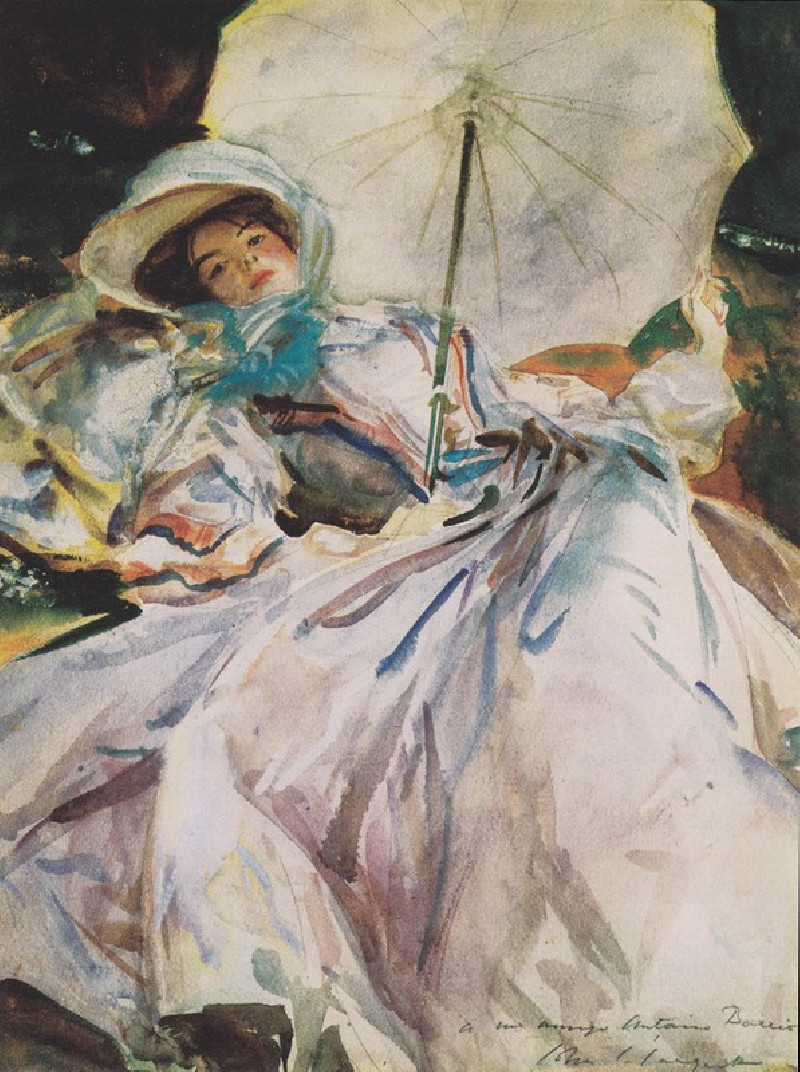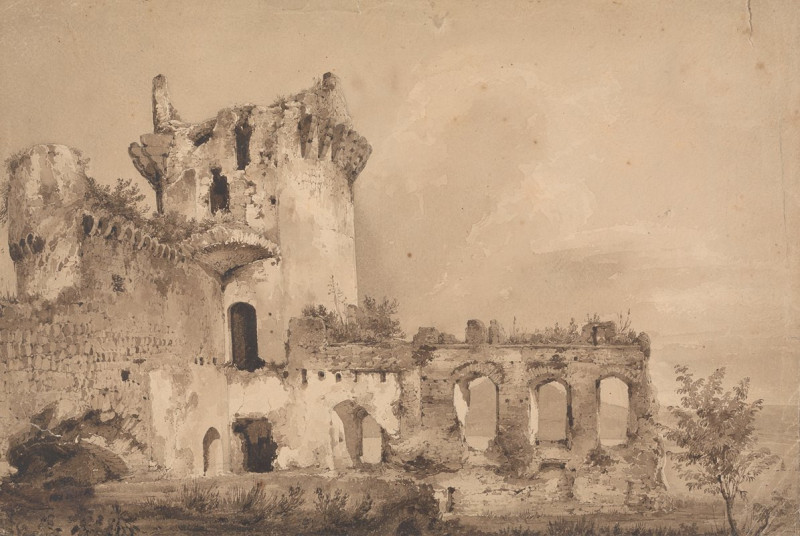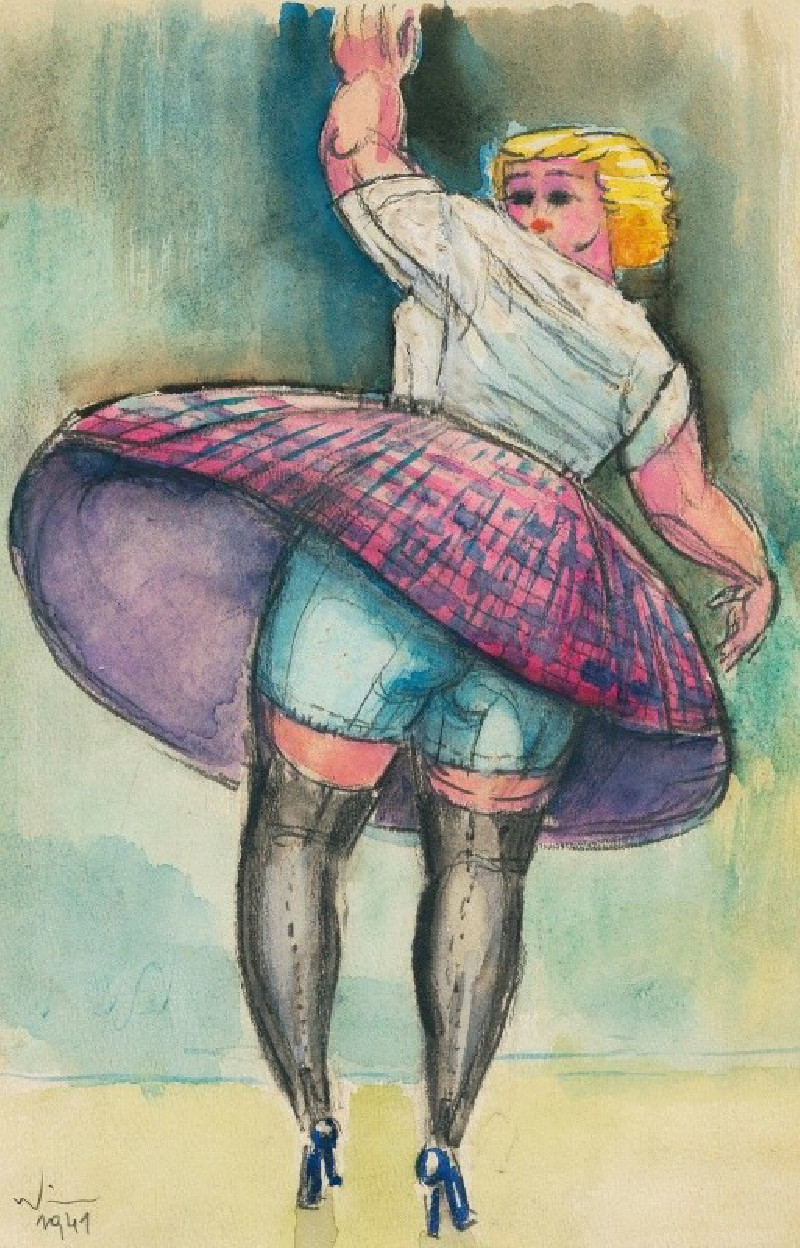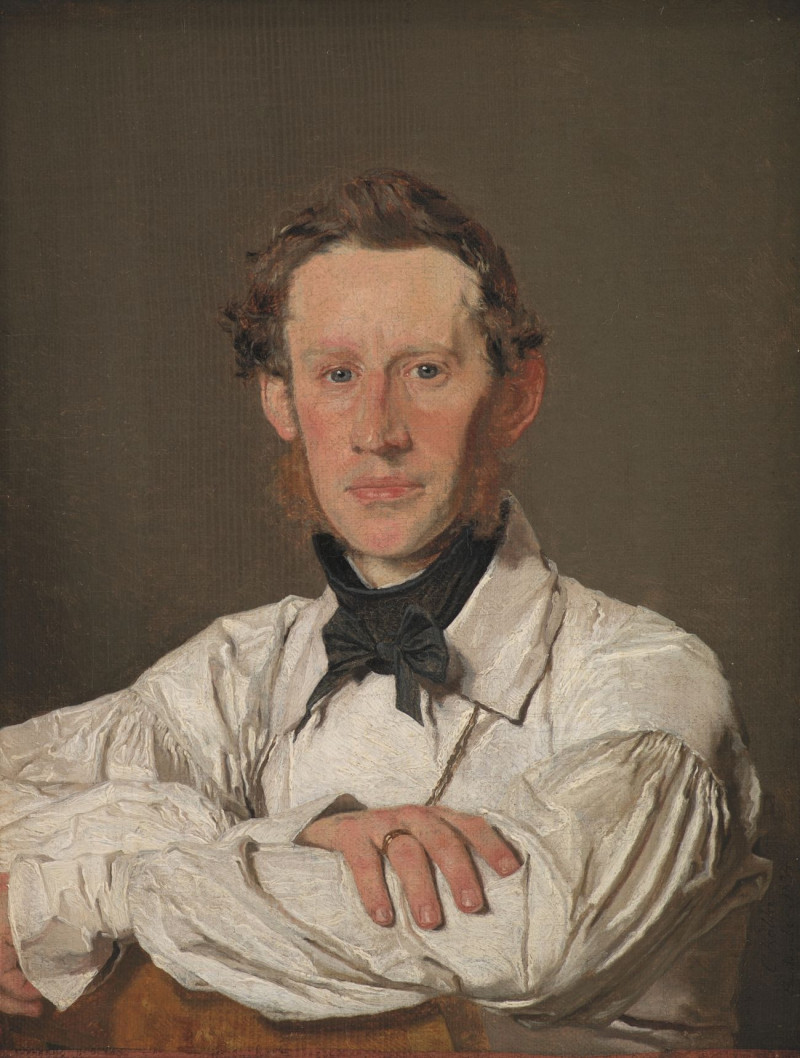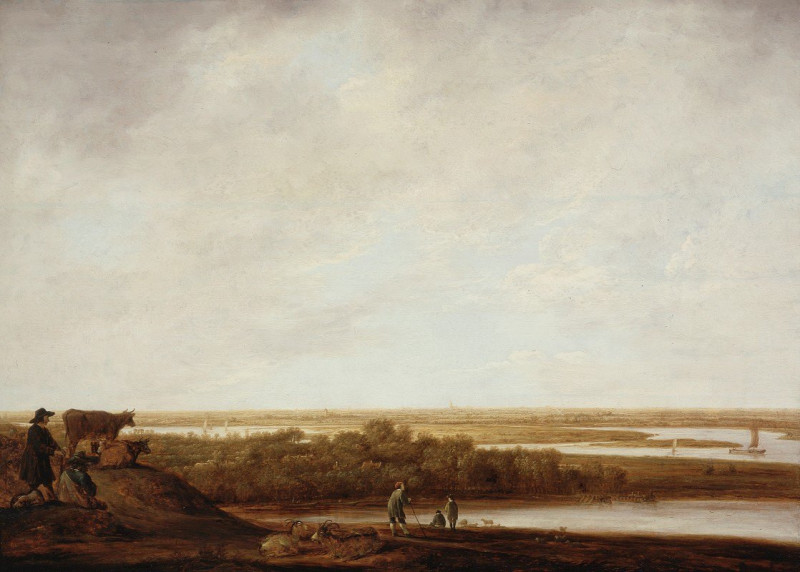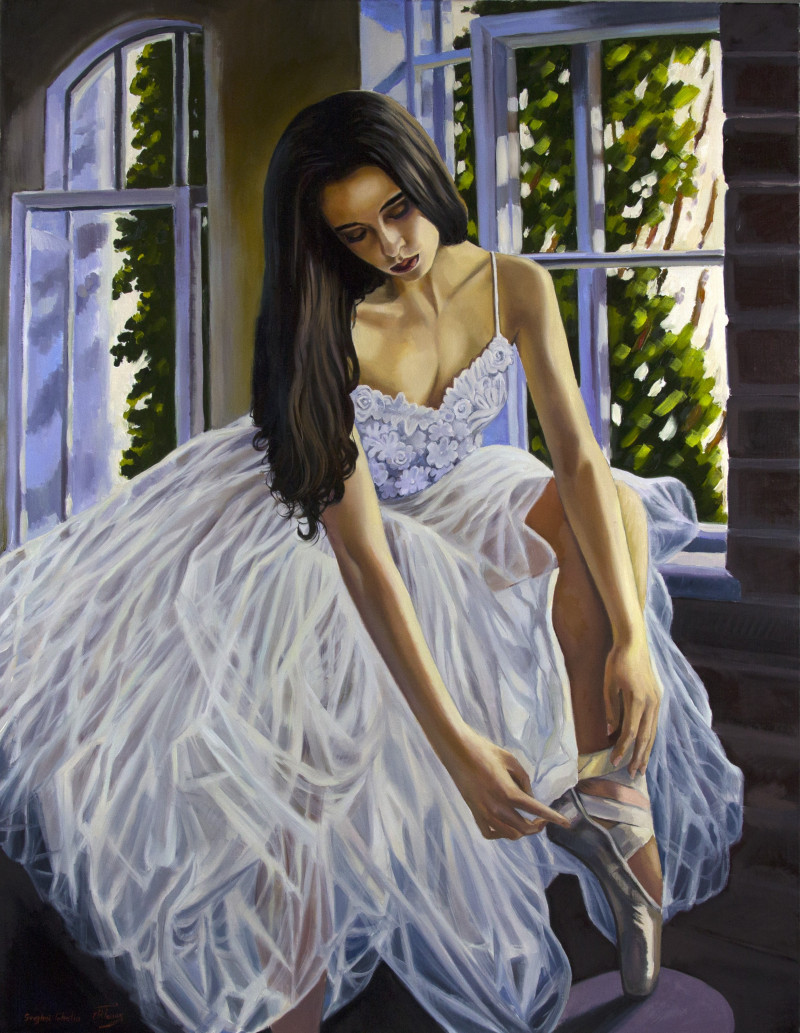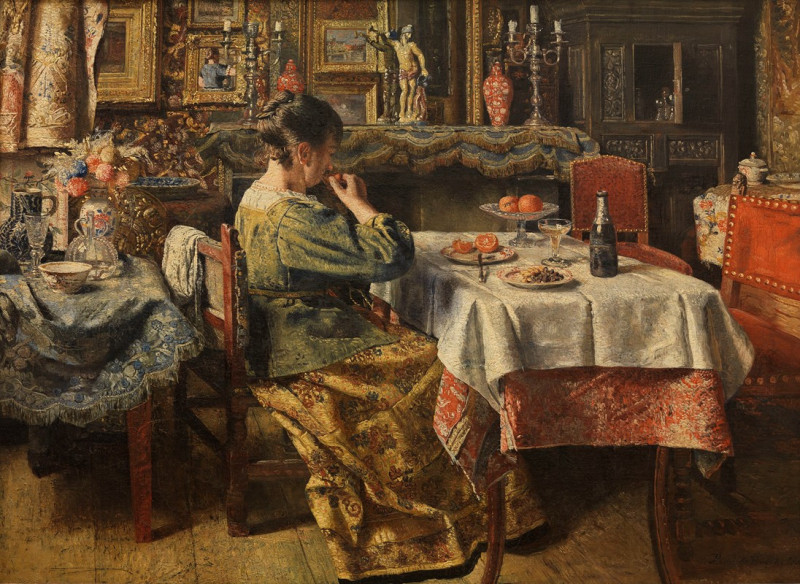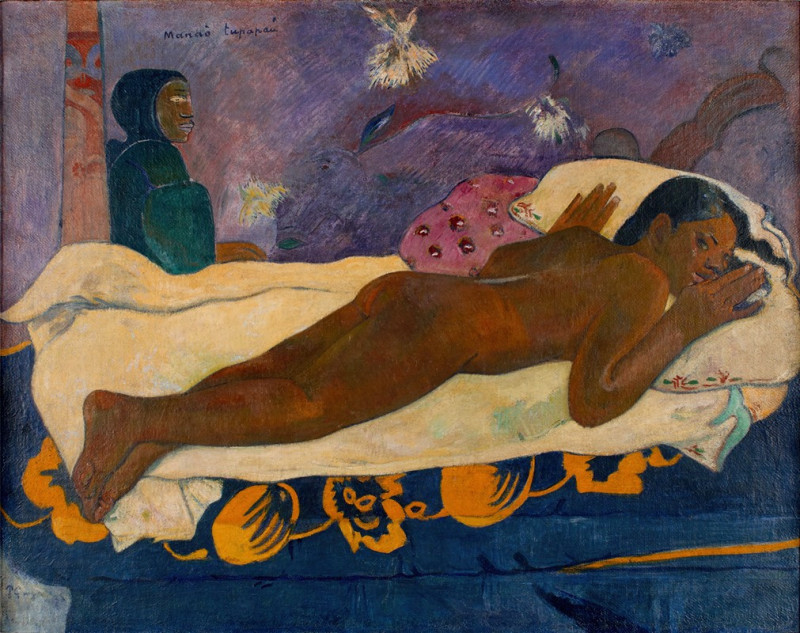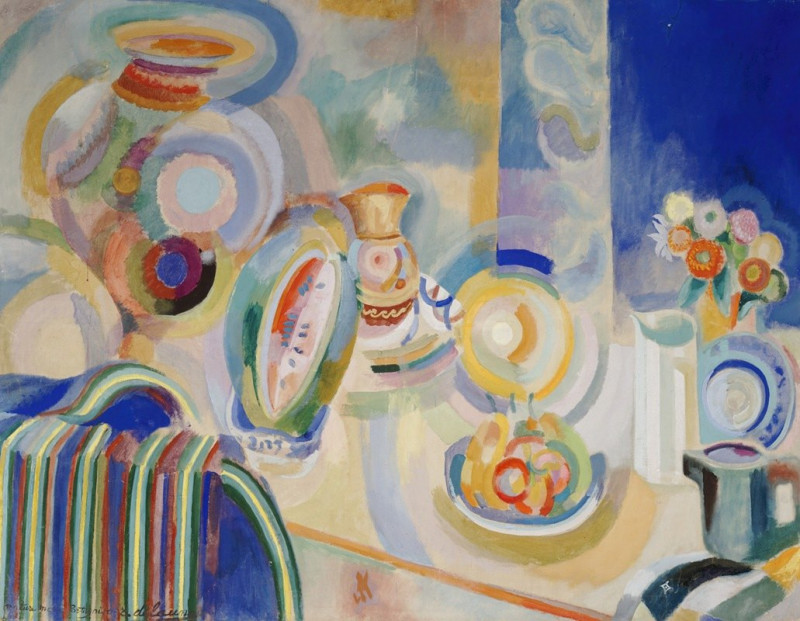Las rinde el Sueño. (Sleep overcomes them.) (1796-1797)
Technique: Giclée quality print
Recommended by our customers
More about this artwork
Welcome to our exploration of Francisco de Goya's striking etching, "Las rinde el Sueño" (Sleep Overcomes Them), crafted between 1796 and 1797. This artwork is part of Goya's illustrious series of prints that delve into social and philosophical commentary through vivid, often stark imagery.In "Las rinde el Sueño," we encounter a poignant scene under the cloak of night. The composition positions a lone, seated woman within a darkened space, her posture tired and contemplative, suggesting a deep emotional or physical exhaustion. Surrounding her are several figures, entirely enveloped in blankets or cloaks, lying inert as if completely overtaken by slumber.The use of darkness and shadow plays a crucial role, intensifying the mood of vulnerability and isolation. The mysterious, partially visible grid-like structure in the background could imply a setting that is institutional or confining, hinting at themes of human suffering or restraint.Goya, renowned for his ability to capture the essence of human condition and societal issues, might be commenting on the burdens that society places upon individuals, often leading to their physical or mental collapse. This interpretation is bolstered by the artwork's title, which evokes the overwhelming power of sleep or fatigue, serving as both a literal and metaphorical surrender.This etching compels viewers to reflect on the limits of human endurance and the solace that rest can bring in the face of relentless challenges. Goya's masterful handling of the etching technique enhances the dramatic impact, making "Las rinde el Sueño" not only a significant work of art but also a powerful social critique.
Delivery
Returns
Francisco José de Goya y Lucientes (30 March 1746 – 16 April 1828) was a Spanish romantic painter and printmaker. He is considered the most important Spanish artist of the late 18th and early 19th centuries. His paintings, drawings, and engravings reflected contemporary historical upheavals and influenced important 19th- and 20th-century painters. Goya is often referred to as the last of the Old Masters and the first of the moderns.

